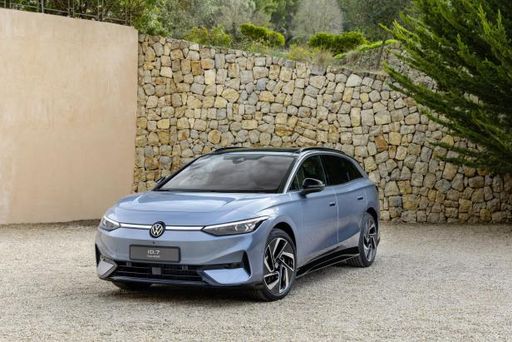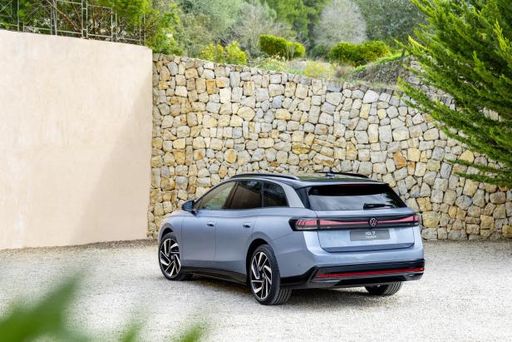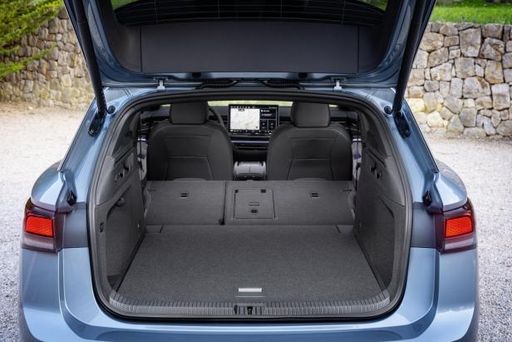Alfa Romeo Junior vs VW ID.7 Touring – Which model is better for everyday use?
Both models have their strengths – but which one suits you more?
Compare performance, efficiency, price and space directly: Alfa Romeo Junior or VW ID.7 Touring?
Costs and Efficiency:
Price and efficiency are key factors when choosing a car – and this is often where the real differences emerge.
Alfa Romeo Junior has a convincingly advantage in terms of price – it starts at 25700 £, while the VW ID.7 Touring costs 47100 £. That’s a price difference of around 21390 £.
In terms of energy consumption, the advantage goes to the VW ID.7 Touring: with 14 kWh per 100 km, it’s hardly perceptible more efficient than the Alfa Romeo Junior with 15.10 kWh. That’s a difference of about 1.10 kWh.
As for range, the VW ID.7 Touring performs significantly better – achieving up to 689 km, about 279 km more than the Alfa Romeo Junior.
Engine and Performance:
Power, torque and acceleration are the classic benchmarks for car enthusiasts – and here, some clear differences start to show.
When it comes to engine power, the VW ID.7 Touring has a slightly edge – offering 340 HP compared to 280 HP. That’s roughly 60 HP more horsepower.
In acceleration from 0 to 100 km/h, the VW ID.7 Touring is slight quicker – completing the sprint in 5.50 s, while the Alfa Romeo Junior takes 5.90 s. That’s about 0.40 s faster.
In terms of top speed, the Alfa Romeo Junior performs a bit better – reaching 206 km/h, while the VW ID.7 Touring tops out at 180 km/h. The difference is around 26 km/h.
There’s also a difference in torque: VW ID.7 Touring pulls clearly stronger with 679 Nm compared to 345 Nm. That’s about 334 Nm difference.
Space and Everyday Use:
Beyond pure performance, interior space and usability matter most in daily life. This is where you see which car is more practical and versatile.
Both vehicles offer seating for 5 people.
In curb weight, Alfa Romeo Junior is decisively lighter – 1380 kg compared to 2191 kg. The difference is around 811 kg.
In terms of boot space, the VW ID.7 Touring offers evident more room – 605 L compared to 415 L. That’s a difference of about 190 L.
In maximum load capacity, the VW ID.7 Touring performs distinct better – up to 1714 L, which is about 434 L more than the Alfa Romeo Junior.
When it comes to payload, VW ID.7 Touring minimal takes the win – 465 kg compared to 420 kg. That’s a difference of about 45 kg.
Who wins the race?
The VW ID.7 Touring proves to be dominates this comparison and therefore becomes our DriveDuel Champion!
VW ID.7 Touring is the better all-rounder in this comparison.
 @ Volkswagen
@ Volkswagen
VW ID.7 Touring
Alfa Romeo Junior
The Alfa Romeo Junior captures the essence of Italian design with its sleek lines and compact dimensions, making it an icon of elegance and performance. With a spirited driving experience and a charming retro aesthetic, it appeals to enthusiasts and casual drivers alike. This delightful car embodies the brand's rich heritage while remaining a fun and engaging option for those seeking a unique automotive experience.
details @ Alfa Romeo / Stellantis Media
@ Alfa Romeo / Stellantis Media
 @ Alfa Romeo / Stellantis Media
@ Alfa Romeo / Stellantis Media
 @ Alfa Romeo / Stellantis Media
@ Alfa Romeo / Stellantis Media
VW ID.7 Touring
The VW ID.7 Touring represents a new chapter in Volkswagen's electric vehicle lineup, offering a seamless blend of style and sustainability. This estate car is designed to provide ample space and comfort for both passengers and luggage, making it ideal for long journeys. With advanced technology features and a focus on eco-friendly performance, the ID.7 Touring is set to appeal to environmentally conscious drivers who don’t want to compromise on practicality or luxury.
details @ Volkswagen
@ Volkswagen
 @ Volkswagen
@ Volkswagen
 @ Volkswagen
@ Volkswagen
 @ Alfa Romeo / Stellantis Media
@ Alfa Romeo / Stellantis Media
|
 @ Volkswagen
@ Volkswagen
|
|
|
|
Costs and Consumption |
|
|---|---|
|
Price
25700 - 41600 £
|
Price
47100 - 54900 £
|
|
Consumption L/100km
4.8 - 5.4 L
|
Consumption L/100km
-
|
|
Consumption kWh/100km
15.1 - 17.5 kWh
|
Consumption kWh/100km
14 - 16.6 kWh
|
|
Electric Range
344 - 410 km
|
Electric Range
584 - 689 km
|
|
Battery Capacity
0.4 - 51 kWh
|
Battery Capacity
77 - 86 kWh
|
|
co2
0 - 119 g/km
|
co2
0 g/km
|
|
Fuel tank capacity
44 - 45 L
|
Fuel tank capacity
-
|
Dimensions and Body |
|
|---|---|
|
Body Type
SUV
|
Body Type
Estate
|
|
Seats
5
|
Seats
5
|
|
Doors
5
|
Doors
5
|
|
Curb weight
1380 - 1689 kg
|
Curb weight
2191 - 2336 kg
|
|
Trunk capacity
340 - 415 L
|
Trunk capacity
605 L
|
|
Length
4173 mm
|
Length
4961 mm
|
|
Width
1781 mm
|
Width
1862 mm
|
|
Height
1505 - 1538 mm
|
Height
1549 - 1551 mm
|
|
Max trunk capacity
1205 - 1280 L
|
Max trunk capacity
1714 L
|
|
Payload
390 - 420 kg
|
Payload
459 - 465 kg
|
Engine and Performance |
|
|---|---|
|
Engine Type
Electric, Petrol MHEV
|
Engine Type
Electric
|
|
Transmission
Automatic
|
Transmission
Automatic
|
|
Transmission Detail
Dual-Clutch Automatic, Reduction Gearbox
|
Transmission Detail
Reduction Gearbox
|
|
Drive Type
Front-Wheel Drive, All-Wheel Drive
|
Drive Type
Rear-Wheel Drive, All-Wheel Drive
|
|
Power HP
136 - 280 HP
|
Power HP
286 - 340 HP
|
|
Acceleration 0-100km/h
5.9 - 9.1 s
|
Acceleration 0-100km/h
5.5 - 6.7 s
|
|
Max Speed
150 - 206 km/h
|
Max Speed
180 km/h
|
|
Torque
230 - 345 Nm
|
Torque
545 - 679 Nm
|
|
Number of Cylinders
3
|
Number of Cylinders
-
|
|
Power kW
100 - 207 kW
|
Power kW
210 - 250 kW
|
|
Engine capacity
1199 cm3
|
Engine capacity
-
|
General |
|
|---|---|
|
Model Year
2024 - 2025
|
Model Year
2024
|
|
CO2 Efficiency Class
A, C, D
|
CO2 Efficiency Class
A
|
|
Brand
Alfa Romeo
|
Brand
VW
|
What drive types are available for the Alfa Romeo Junior?
Available configurations include Front-Wheel Drive or All-Wheel Drive.
The prices and data displayed are estimates based on German list prices and may vary by country. This information is not legally binding.
